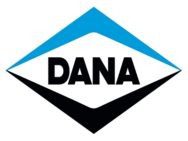 From construction to freight to salvaging forsaken ships at sea, current and early cranes are simply the arms that do the heavy lifting powering our global industries. The world just wouldn’t be the same without them””and it’s our goal to make sure your cranes will perform powerfully, flexibly, and effectively until the jobs are done.
From construction to freight to salvaging forsaken ships at sea, current and early cranes are simply the arms that do the heavy lifting powering our global industries. The world just wouldn’t be the same without them””and it’s our goal to make sure your cranes will perform powerfully, flexibly, and effectively until the jobs are done.
So how did cranes become such an integral part of all of our lives (whether we realize it or not)? Let’s take a look back through history:
Democracy and Devotion: Greeks Invent the Crane
Necessity is the mother of all innovation””and you won’t find a more urgent group of inventors than those under threat of being smote from above. For whatever reasons, the Ancient Greeks felt compelled to build huge temples to their gods, and traditional methods like ramps for moving and lifting the enormous building stones of massive monuments like the Parthenon just weren’t going to get the jobs done. Meet the crane: at first a simple winch and pulley system, and later a compound pulley system credited to Aristotle.
Today, you can see the difference in the way temples were built in different time periods. Pre-cranes, building blocks actually tended to be much larger, because so much effort was required to push each one up a ramp that it was less labor-intensive to use bigger and fewer blocks. Post-cranes, blocks were smaller, but stacked higher, in more complicated and advanced structures, and more quickly.
In the end, the Greeks proved just how much more ambitious projects could be with the help of a crane. The Egyptian slaves responsible for building the pyramids block by ramp-elevated block are still squirming with envy in their graves.
Mobility and Versatility: Cranes Power the Roman Empire
Rome wasn’t built in a day, but without the introduction of and improvement upon the Greek cranes, construction would’ve taken much, much longer than it did. In fact, the Romans were the first to use multiple cranes for cooperative lifting tasks, as is evident by the massive cornerstone blocks used in some of the famous structures.
But beyond the beautiful, historic, crane-built city still very visible today, perhaps the most impressive aspect of Roman crane use was the way they were used far from their home. Again””necessity drives innovation. And as the Roman Empire stretched further and further away from Rome, and as conquering armies became more and more ambitious, mobility and versatility in their cranes became key. The Roman army needed cranes that could move quickly, be assembled and torn down quickly, and perform a variety of tasks””all without losing their powerful lifting capabilities.
Today, you can see that influence in how mobile cranes are used all over the world. You find them on boats, docks, trains, and trucks, often able to be quickly adapted for difficult, unusual tasks. Lifting capacity has skyrocketed, up to 1,000 tons. In the end, the Romans proved just how much mobility and versatility multiply capability.
At K&L Clutch, we understand just how many ways your business relies on your lifting capabilities. When a crane breaks down, we can be there””just about anywhere in the world””with the industrial machine parts to get your project back on track in no time.

























